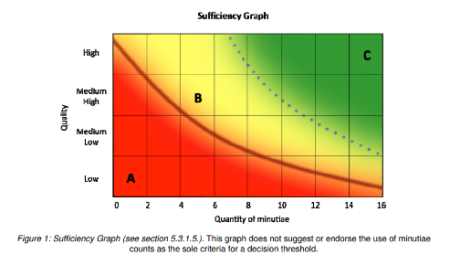It may be generally believed that there is a minimum threshold for identification. But that is a lie perpetuated in television shows and movies to the point where I think the general public believes it.
“How many points?” is a question that has hounded latent print examiners since the very first days of our science. Sir Francis Galton in his book “Finger Prints” proposed twelve points in 1892.
A better analysis of the number of points was given by Edmund Locard in 1914 in his “Tripartite Rule.” He said that identity is beyond debate with 12 or more matching points. 8 to 12 points could yield a conclusion of identity, based on the presence of other details (Locard was the “father” of poreoscopy). Further, Locard stated that fewer than 8 points could still indicate a likelihood of identity in proportion to the number of points and other details. See @Dusty Clark’s page at http://www.latent-prints.com/locard.htm
Since Locard, there have been other statistical models proposed, but none have been universally accepted and several software programs have been written to try and approximate a likelihood ratio based on points. The problem with that approach is that the human examiner, whether conscious of it or not, also uses finer details in the subjective decision-making process when such details are available.
SWGFAST debated this problem for years when @John Vanderkolk proposed his concept of a Q-Q Graph. Initially, it was only a conceptual graph, but over a period of several meetings, SWGFAST refined the graph to include levels of clarity on the Y-Axis and numbers of points on the X-Axis.
Latent prints in the green zone are deemed high quality. Comparisons are straightforward and require only normal documentation. Latent prints in the yellow zone are deemed complex comparisons. They require more extensive documentation and QC policies of stricter verification. Latent prints in the red zone, i.e., below the dark red curve line, are not suitable for comparison.

